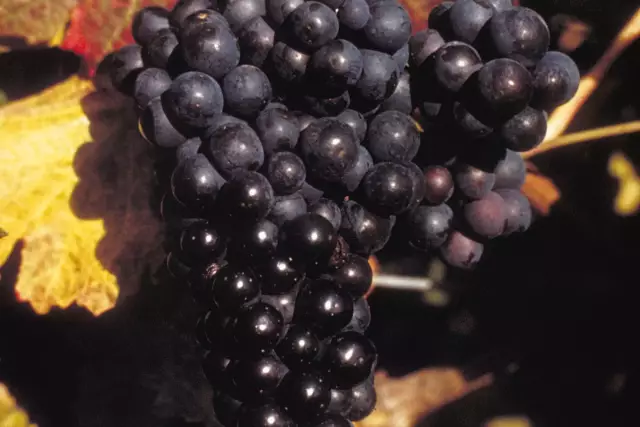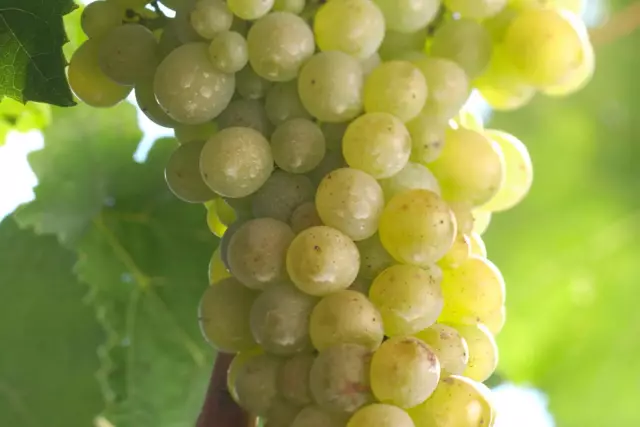Scheurebe

Scheurebe is a crossing of Riesling and Bukettrebe (until 2012 thought to be Silvaner), that is well established in several German wine regions. It is one of the popular aromatic varieties.
Facts
-
1916
bred by Georg Scheu
-
1.499 ha
Vinyard area 2023
Cultivation
The Scheurebe - a crossing between the Riesling and the Bukettrebe - is almost as demanding as the Riesling in terms of location. It tolerates reasonably dry, poor soils and copes well with loess and calcareous soils. Its wood ripens for a long time, the long assimilation of the foliage allows for high-grade grapes. Grape ripeness is reached shortly before Riesling, acid degradation in the medium-sized berries begins relatively late. The variety is endangered by winter frosts as well as by Botrytis and Oidium infestation.
Significance
The cultivation gained recognition in the 1950s when it was possible to produce Beerenauslese and Trockenbeerenauslese from the Scheurebe. Bred in Alzey, Rheinhessen, the variety was mainly planted by the winegrowers of Germany's largest winegrowing region. With 4.4 percent, it reached its largest share of planted vineyard area in 1985. Of around 1,499 hectares of vineyards planted with Scheurebe in 2023, 743 hectares are in Rheinhessen, around 328 hectares in the Palatinate, 208 in Franconia and 101 hectares on the Nahe. The area share of the German vineyard area is currently around 1.4 per cent.
Vinification and taste
The different vinification styles and quality levels make it possible to use Scheurewein wines in a variety of ways. The light Kabinett wine is ideal for social gatherings, dry to semi-dry Spätlese wines are recommended as accompaniments to aromatic and spicy ragouts of fish and poultry, especially for Asian cuisine, while noble sweet Spätlese wines and Auslese wines go well with fruity desserts.
Wines from the Scheurebe are often offered as Prädikatswein, whereby the flavours "sweet" and "mellow" are more important than with other grape varieties. Depending on the quality, the colour is pale yellow, straw yellow or intense golden yellow. Delicate Kabinett wines and medium-bodied Spätlese wines are characterised by an accentuated varietal bouquet and a harmonious combination of stimulating acidity and fine fruity sweetness. The accentuated bouquet is mostly reminiscent of blackcurrants (cassis), more rarely of mango, tangerines, limes, peaches or very ripe pears. The noble sweet varieties are characterised by a long shelf life and show an impressive peach aroma or rose fragrance after many years.
History
During the First World War in 1916, the vine breeder Georg Scheu succeeded in breeding a convincing new variety, the Scheurebe, at what was then the Landesanstalt für Rebenzüchtung in Alzey. For a long time, Silvaner was considered to be the crossing partner alongside Riesling, but DNA analyses in 2012 identified the Bukettrebe as the parent variety. Before the breeder's merit was immortalised in the variety name, it was known as "Dr.-Wagner-Rebe" until the end of 1945 and then as "Sämling 88".
At a glance
- Crossing of Riesling x Bukettrebe (=crossing of Silvaner x Trollinger, 1864 in Randersacker)
- Until 2012, it was assumed that it was a cross between Riesling and Silvaner.
- Late ripening, tolerates dry, poor soils
- Aroma: usually reminiscent of blackcurrants, exotic fruits or very ripe pears
What was the original name of the Scheurebe supposed to be?
Originally, it was to be called "Scheus Liebling", but in the Rhine-Hessian dialect this risked becoming "Scheis Liebling". So the decision was made to go with Scheurebe, a more elegant solution.
with pumpkin and white wine sauce Pasta with pumpkin and white wine sauce
with pumpkin and white wine sauce
- 750 Gramm Butternut-Kürbis(se)
- 3 kleine Zwiebeln
- 2 Zehen Knoblauch
- 1 Becher Crème fraîche
- 250 ml trockener Weißwein
- 500 ml Gemüsebrühe
- 25 Gramm Parmesan oder ähnlicher Hartkäse
- 400 Gramm Spaghetti oder andere Nudeln
- nach Geschmack Salz, Pfeffer, Zucker
- 4 EL Kürbiskerne, evtl. gehackt
- nach Belieben Muskat, Thymian
Sauté the garlic and onions until translucent. Dice the butternut squash and add, season with pepper and sugar. When the cubes are still firm, pour in the white wine and vegetable stock. Continue cooking until the squash is firm to the bite.
In the meantime, cook and drain the pasta.
Add the thyme, nutmeg, salt and crème fraîche to the boiling pumpkin, bring to the boil and thicken. Stir in the parmesan and season to taste. You can also crush some diced pumpkin to make the sauce sweeter.
Arrange the pasta on plates and top with the pumpkin sauce.
Sprinkle with pumpkin seeds.
- Scheurebe (trocken)





